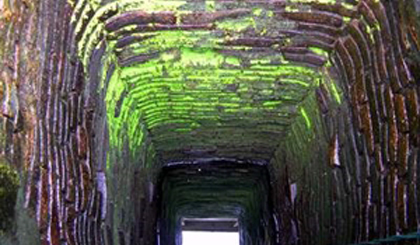Hoi An to reopen ancient wells
Hoi An ancient city, the central province of Quang Nam, plans to restore 80 ancient wells, most of them locate on the north bank of the De Vong River near the Thanh Ha pottery village.
 |
| The Ba Le Well is the most visited by tourists (Photo: Internet) |
Built in the 15th century by the Cham people, most of the city's ancient wells are unusable or buried underground due to rapid urbanisation, said Nguyen Chi Trung, Director of Hoi An's Centre for Monuments Management and Preservation.
Trung said the plan would render usable several wells near the old town, including those at Kazik Park, the house of the Nguyen Tuong royal family at 658 Hai Ba Trung Street, and Am Hon Temple (built to worship the souls of the dead).
A list of 80 ancient wells in the town was released in 2009, but no preservation has yet been done.
Vo Hong Viet, a researcher at the centre, said the round top and square bottom of the wells reflected traditional Cham style.
"Wells were built without mortar or adhesive material, so underground water leaked into the wells easily and kept them full of water, even in the dry season," Viet said.
Some restaurant owners still buy water from ancient wells to make specialties like cao lau (noodles with roasted pork) and my Quang (local rice noodles with pork and shrimp).
The Ba Le Well is the most visited by tourists.
Rapid modernisation and modern lifestyles are threatening the survival of the ancient Cham culture and other ethnic traditions in Quang Nam province, home to UNESCO world heritage sites Hoi An and My Son Sanctuary and world biosphere reserve Cham Island.
Hoi An alone hosted 1.7 million tourists last year with total revenue of VND98 billion (US$4.6 million).
The Ba Le Well is the most visited by tourists. (Photo: Internet)
(Source: VNA/SGGP)
 về đầu trang
về đầu trang






